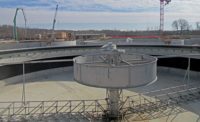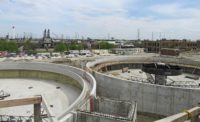Officials in the United States are voicing growing concerns about wastewater flows from Mexico that continue to pollute Southern California communities and beaches despite measures taken to mitigate the problem.
U.S. International Boundary and Water Commissioner Maria-Elena Giner said in a letter in late January that, after a visit with Mexican counterparts and other authorities south of the border, "we still have not seen any improvement in wastewater flows, specifically regarding reductions in both transboundary flows in the Tijuana River and flows into the South Bay International Wastewater Treatment Plant."
While record rainfall recently in southern California has exacerbated problems making repairs to infrastructure on the Mexican side of the border, it's not the cause of the continued flow, Giner's letter said.
Since early 2022, untreated wastewater has been flowing from the Mexican side of the border into the Tijuana River and the Pacific Ocean fouling the water in communities such as Pacific Beach on the U.S. side of the border. In 2022, US and Mexico signed a pair or agreements, Statement of Intent and Minute 328, that outlined the joint effort to solve the sewage problem. As part of that agreement, Mexico pledged $144 million over five years in rehabilitation efforts.
Photo courtesy North America Development Bank
The Comisión Estatal de Servicios Públicos de Tijuana (CESPT) has said a pair of 42-in. pipelines, PB1A and PB1B, which send untreated wastewater to the South Bay International Wastewater Plant on the U.S. side of the border had been repaired and were ready to come back online, but ongoing highway construction along the border and adjacent to the pipelines has taken them out of service. CESPT said they will not be operating at full capacity until the project is completed in March.
"As an immediate measure, I have emphasized to the Mexican state and federal governments the importance of returning to wastewater flow levels experienced prior to the PB1A pipeline break of July 2022," Giner said in her letter.
She also said record rainfalls in 2023 and impacts from rain this year have contributed to the high water levels and continued wastewater transboundary flows. One side effect of the heavy rain, though, is more dilution of the untreated wastewater.
Procurement will begin in March for the PB1 pump station rehabilitation contract that's the first part of an overall project to eliminate the border wastewater flows. The IWBC says if that the overall project is still on schedule to get the flow within permit compliance by August but more delays would complicate that timeline.






Post a comment to this article
Report Abusive Comment